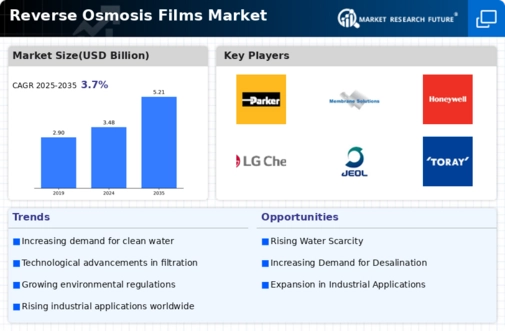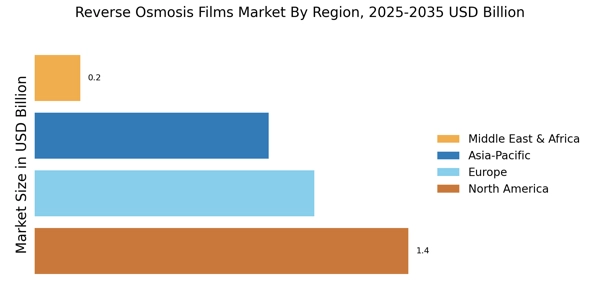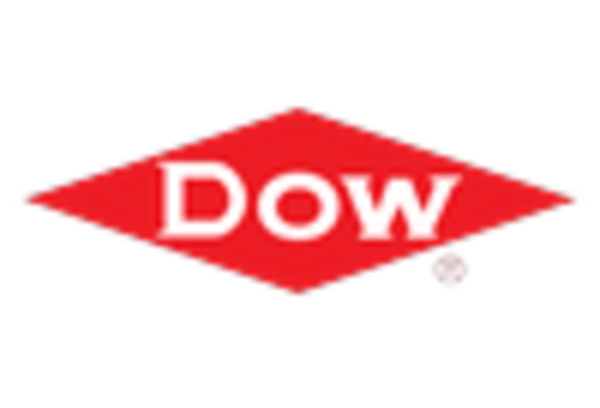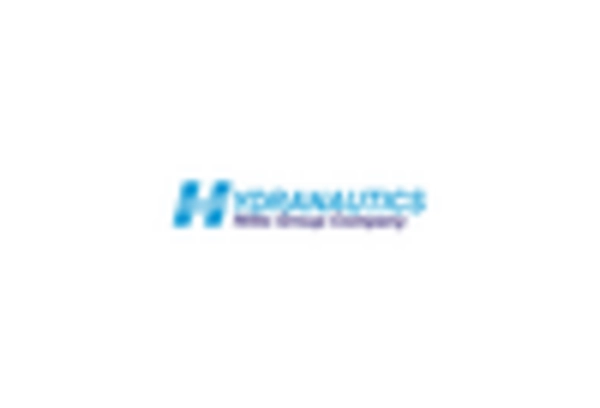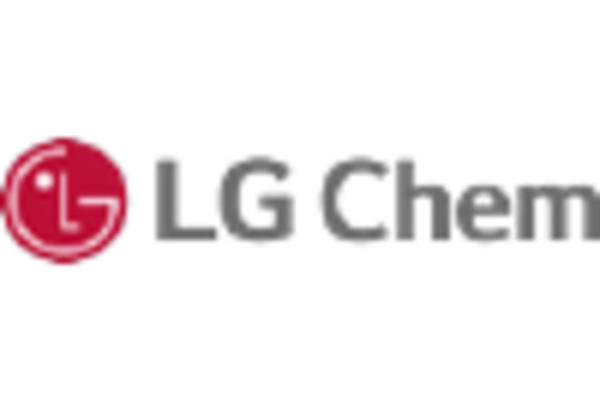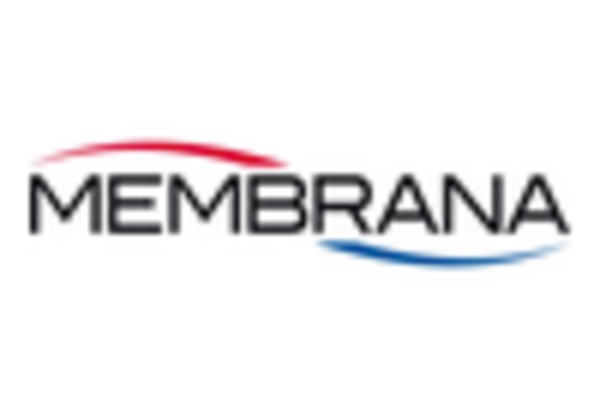Growing Industrial Applications
The Reverse Osmosis Films Market is witnessing a notable increase in demand from various industrial sectors, including food and beverage, pharmaceuticals, and electronics. Industries are increasingly adopting reverse osmosis systems for water purification and process water treatment, which is essential for maintaining product quality and compliance with regulatory standards. For instance, the food and beverage sector utilizes reverse osmosis films to concentrate juices and remove impurities, thereby enhancing product shelf life. The pharmaceutical industry relies on these films for producing high-purity water, crucial for drug formulation. This growing industrial application is expected to propel the Reverse Osmosis Films Market, with a projected market value reaching several billion dollars by 2026.
Environmental Concerns and Water Scarcity
The Reverse Osmosis Films Market is significantly influenced by rising environmental concerns and the urgent need to address water scarcity issues. As populations grow and water resources become increasingly strained, the demand for efficient water purification solutions is escalating. Reverse osmosis technology is recognized for its ability to remove contaminants and provide safe drinking water, making it a preferred choice in regions facing water shortages. Governments and organizations are investing in water treatment infrastructure, further driving the adoption of reverse osmosis systems. This trend is likely to enhance the Reverse Osmosis Films Market, as more entities seek sustainable solutions to combat water scarcity and ensure access to clean water.
Rising Consumer Awareness of Water Quality
The Reverse Osmosis Films Market is also experiencing growth due to rising consumer awareness regarding water quality and health. As individuals become more informed about the potential contaminants in their drinking water, there is a growing demand for effective purification solutions. Reverse osmosis systems are recognized for their ability to remove a wide range of impurities, including heavy metals, bacteria, and chemicals. This heightened awareness is prompting consumers to invest in home water purification systems that utilize reverse osmosis technology. Consequently, the Reverse Osmosis Films Market is likely to expand as manufacturers respond to this demand by developing more efficient and user-friendly reverse osmosis systems.
Regulatory Frameworks Promoting Water Quality
The Reverse Osmosis Films Market is benefiting from stringent regulatory frameworks aimed at improving water quality standards. Governments worldwide are implementing regulations that mandate the treatment of wastewater and the provision of safe drinking water. These regulations often require the use of advanced filtration technologies, including reverse osmosis systems, to meet compliance. As a result, manufacturers and water treatment facilities are increasingly investing in reverse osmosis films to adhere to these standards. This regulatory support is expected to drive the growth of the Reverse Osmosis Films Market, as compliance becomes a critical factor for water treatment operations across various sectors.
Technological Innovations in Filtration Systems
The Reverse Osmosis Films Market is experiencing a surge in technological innovations that enhance filtration efficiency and reduce energy consumption. Advanced membrane materials, such as polyamide thin-film composites, are being developed to improve water permeability and salt rejection rates. These innovations not only optimize the performance of reverse osmosis systems but also contribute to cost savings for end-users. As a result, the market is projected to grow at a compound annual growth rate of approximately 7% over the next five years. This growth is driven by the increasing adoption of advanced filtration technologies across various sectors, including municipal water treatment and industrial applications, thereby expanding the Reverse Osmosis Films Market significantly.


